Every era is filled with mechanical enthusiasts and designers, particularly the brilliant mechanical engineers of the former Soviet Union and Germany, who constructed some machinery and design manuscripts that you may have never seen. However, these ingenious ideas have been realized and you can only admire them!
1. Armored motorcycle
In December 1940, a design was submitted for an “armored motorcycle” with a movable curved armor cover on the motorcycle.

2. Moving armored fortress
The idea of a permanent fortified bunker was applied to tanks, resulting in the design of a mobile armored fort.
The tank is equipped with 600 mm thick armor and large-caliber guns, as well as small-caliber guns, flat-fire machine guns, and anti-aircraft machine guns.
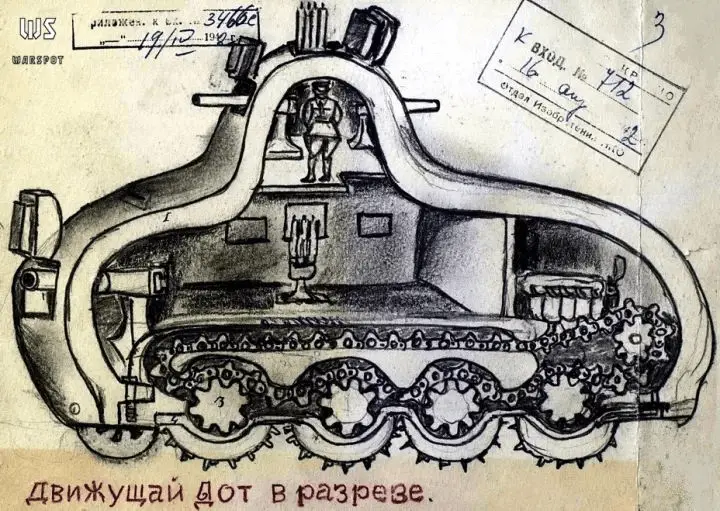
3. Manpower tractors
The product features a human-powered tractor that can perform multiple functions, including transportation and plowing.
According to the designers, the tractor utilizes a multi-stage chain drive system that enables a larger transmission ratio. As a result, it can generate a traction force five times greater than an ordinary bicycle and efficiently pull a plow in the field.
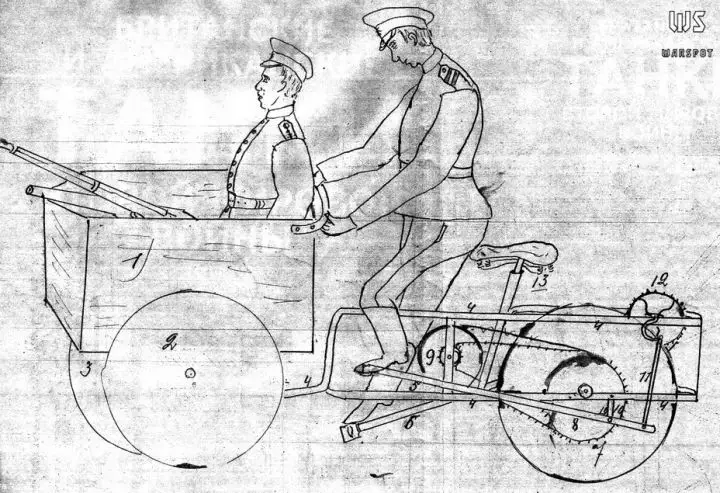
4. The Birdman suit
In 1955, Leo Valentin, also known as the “birdman,” attempted to fulfill mankind’s desire to fly by designing a suit called the Birdman Suit. This suit featured a pair of large wings attached to outer armor.
Tragically, in 1956, Valentin met his untimely death while testing the suit. He jumped out of an airplane to try out his invention and crashed to his death.

5. The duck-foot pistol
The duckfoot pistol was a popular weapon among 19th-century captains. It had four barrels resembling duck feet and could attack up to four enemies simultaneously. However, in actual combat, it was unable to target enemies directly in front.
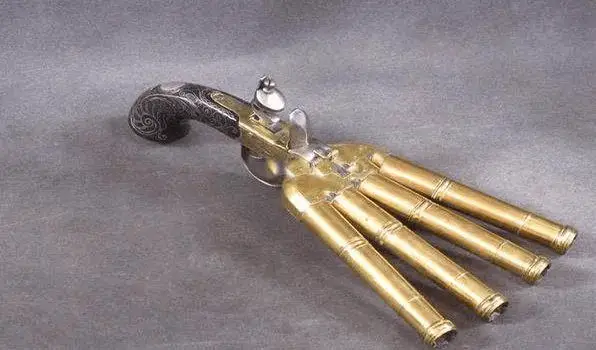
6. Amphibious tank armoured vehicle travel mechanism
This is a proposal for the running mechanism of an amphibious armored tank submitted by Lieutenant Б.К. Григоренко on March 2, 1944.
Prior to joining the army, Lieutenant Григоренко worked as a mechanic and repairman.
After enlisting, he served as a repair shop mechanic in a tank unit, and later as a car repairman in a cavalry regiment.
Having experienced the challenges of navigating muddy roads during the war, he proposed the use of screw rods as an alternative to wheels and tracks for advancing tanks.
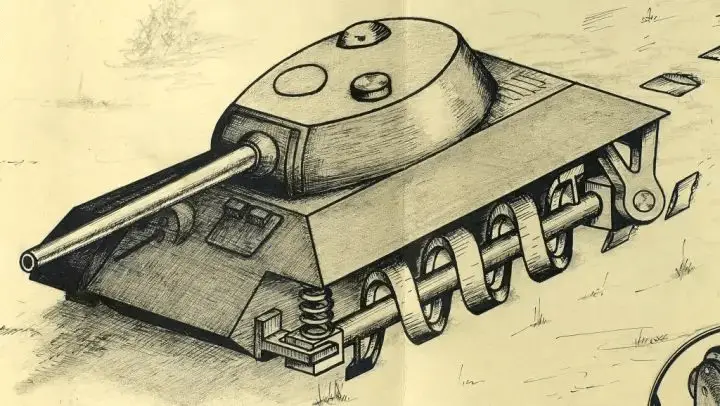
It should be said that this plan is extremely advanced, and a similar vehicle really appeared in the Soviet Union many years later, that is, the SHN-1 all-terrain vehicle.

7. Combat vehicle “Karrar”
The “Karrar” stands at a total height of about 3 meters and requires only one crew member to operate as both the driver and the gunner.
It moves on 6 spring-loaded legs controlled by the engine at the bottom of the turret, utilizing a jumping method that compresses the spring using a motor to contract and release the support leg, allowing it to jump forward between 5 to 20 meters each time.
The battle room, with a diameter of 1.25 meters, is a sphere that can be rotated and is constructed of alloy armored steel plates, according to the designer’s specifications.
Equipped with 4 fixed PPsh41 submachine guns, the “Karrar” is designed for combat purposes. Additionally, the designers also considered subsequent installation of anti-tank guns and flamethrowers to combat tanks.
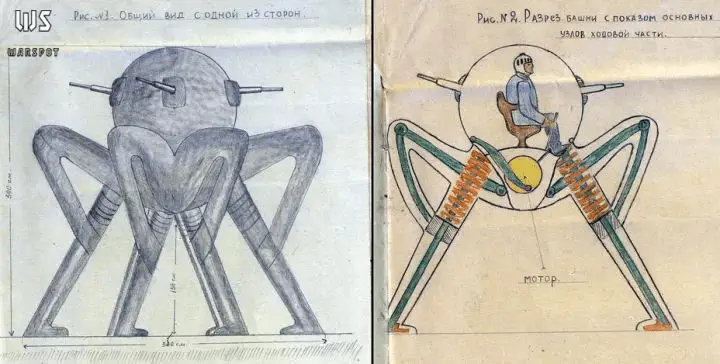
8. Krummlauf periscopic rifle
The design of the Krummlauf periscope rifle can reach 90-degree bends, providing advantages in urban street warfare. This design allows soldiers hiding in corners to view the battle behind them through the mirror, showcasing its ingeniousness.
However, the challenge of changing the direction of the bullet remains unsolved by human means and may require extraterrestrial intervention.

9. Human radar
During World War I in Italy, before the invention of radar, air defense relied solely on individuals to visually and audibly detect the sound of approaching aircraft. However, due to the limitations of human hearing, someone invented a gadget to aid in this task.

10. The dual-turret tank
This is a dual-turret tank design.
The rear turret can be raised and lowered at a speed of 2 meters per second, and it can reach a maximum height of 10 meters. The lifting power is provided by a hydraulic lever.
The bomb feed mechanism and personnel access are concealed in an accordion airbag hose.
The designer believes that this lifting turret can be useful for several purposes, such as concealing the observation of distant targets in wooded areas, shooting high-rise targets in urban battles, and approaching buildings during fires to allow the people inside to evacuate to the ground using the lifting turret.
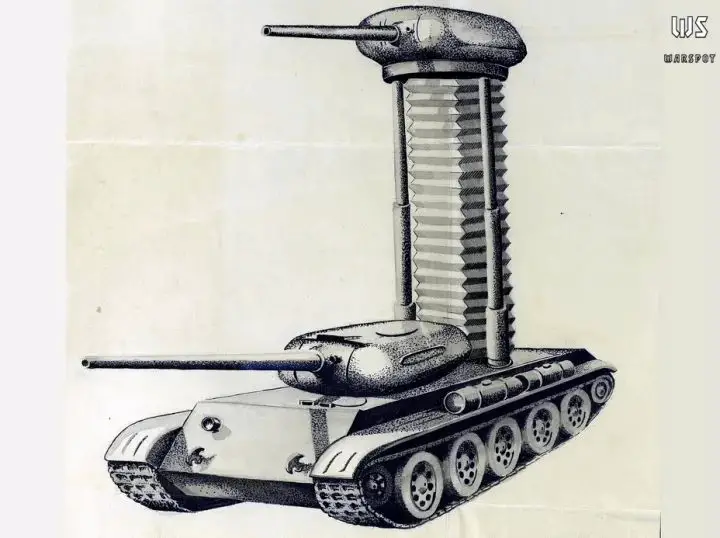
11. Steel armor
At first glance, it may appear bulky, but this shield can withstand bullets. In case of danger, simply drop the eye protection and kneel on the ground while retracting your limbs behind the shield.
Could this be the prototype for Iron Man?

12. Jet tank
This vehicle is propelled by a solid rocket motor and can be equipped with wheels, which are interchangeable with sleds during winter.
It accommodates a crew of two, comprising of a pilot and a gunner, who assume a prone position in a low-profile and armored compartment.
The weapon system comprises six RS-82 rockets, which are divided into two launchers. The space between these launchers is occupied by a ShKAS aviation machine gun.

The solid rocket motor used in the “PT Jet Tank” is actually a direct transplant from the RS-132 rocket motor, which is electrically fired. The designers of the tank believed that it would have a low profile, making it difficult for the enemy to hit it even at top speeds of 100 km/h.
During battle, the jet tank could be deployed suddenly and used intensively. It was equipped with an RS-82 rocket, which could be fired at enemy tanks, a machine gun for taking out infantry, and a whistling rocket engine that could cause great psychological shock to the enemy.
13. Round Battleships
In the early 1870s, Russian Vice-Admiral Popov proposed the bold idea of making battleships round to have the largest tonnage at the shallowest draught and smallest size possible, while still being able to carry guns of the same size as larger battleships.
Upon demonstrating the feasibility of the idea, the Technical Committee of the Russian Navy established a panel to design it.

Several round warships were soon completed and put into service. Each warship had a diameter of 30.8 meters and was equipped with an 11-inch cannon, two 4-pounder cannons, 16 37mm cannons, and 12 pole torpedoes.
However, the flat bottom of the boat caused waves to sway more than a meter high, which severely affected the accuracy of shooting, making it impossible to operate. Even the Dnieper River, which flowed at only 3 knots per hour, posed a challenge to these ships. The ship turned more fiercely when the gun was fired, and encountering the current caused it to spin out of control, leaving all the people on board feeling dizzy.
14. Heavy Battle Tanks
This heavy battle tank was conceived by a reserve officer with the rank of lieutenant in March 1944. The officer designed retractable side armor flaps for the tank’s tracks on both sides, which could be lowered to cover the tracks and the sides of the load wheels during combat. These flaps were similar to the side skirts found on modern tanks.
Additionally, a pair of large rollers were designed for the front of the tank, connected by a drive chain to the track travel system. These rollers could be rotated together to shield the front of the tank’s tracks from incoming shells, similar to the mine-sweeper rolls on modern mine-sweeper tanks.

The Lieutenant also proposed to strengthen firepower and install a large-caliber automatic gun for the tank.
But he didn’t mention the specific structure of the artillery.

15. Giant Rat Tank
The No. 8 mouse tank designed by the father of Porsche, the biggest feature is that it is big, and it is also the largest super tank in history so far!
If the intelligence personnel at the time did not investigate in detail but just took it for granted, it would definitely suffer a big loss.

This 188-ton behemoth is too heavy and even crushes the bridge, which can only use a weird breathing tube to connect two mouse tanks to dive across the river.
Hitler ordered the suspension, which ended the German super tank delusion.
16.Four-track tank
The four-track design scheme was intended to enhance the tank’s passing ability on extremely harsh terrain by adding two tracks.
However, it was rejected due to its potential to increase the weight by 5-6 tons, and the exposed chain drive at the bottom that could easily get stuck in rocks and mud, leading to failure.
Nonetheless, the four-track design did not vanish entirely, as we are familiar with the nuclear war tank 279 project that employed this design.
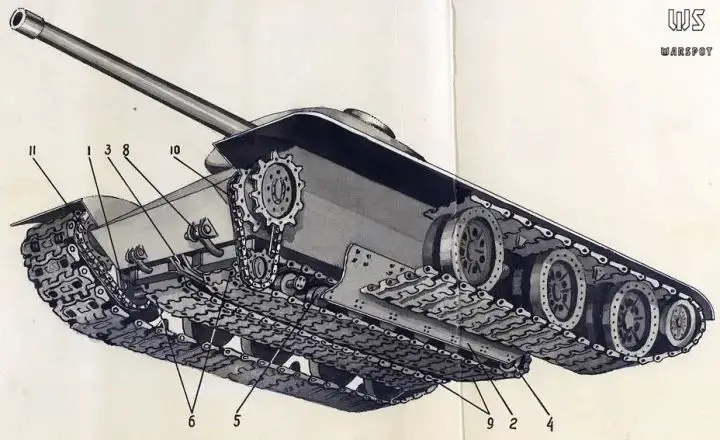
17. Steel hydraulic jet tanks
The designer didn’t just design typical tank cannons and machine guns. He also designed an astonishing weapon: a steel hydraulic jet.
To make this possible, he installed a steel generator in the tank’s hull. This generator was loaded with iron oxide powder and aluminum powder, which combined to create the aluminum hot agents.
When the aluminum hot agent ignited, it created a powerful burning effect. The iron oxide was reduced to a molten state of molten iron, and then sprayed out to destroy the target.
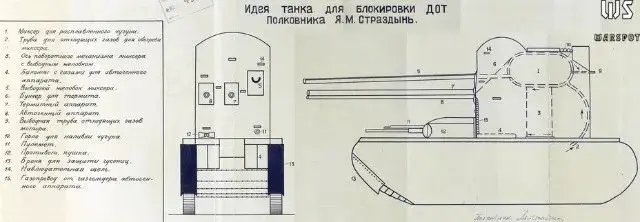
18. Balloon bombs
During World War II, Japan used balloons with 9,300 bombs to blow up the United States and Canada without leaving them.
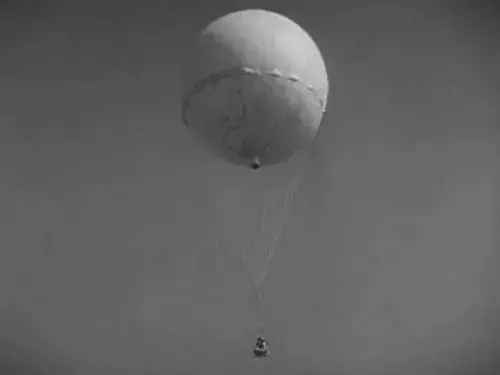
However, only 357 of them successfully hit their intended targets, while two of them ended up floating back to Japan and detonating, causing damage to their own people. It’s worth considering how these bombs were able to detonate in the United States, even after hitting their targets.
19. Stick hand grenades
It was invented by the British, they put sticky glue on a grenade and throw it at a tank and it sticks to the tank.
Then it explodes and wins the war!

Initially, the military opposed the production of the weapon, but then British Prime Minister Winston Churchill made a strong push for mass production. Consequently, 2.5 million sticky grenades were manufactured.
However, when they were deployed in the field, a problem arose. The Germans’ tanks were not maintained properly, as they were covered in mud and dirt, making it difficult for the sticky grenades to adhere to the enemy tanks!
20. Flying aircraft carriers
In 1933, two prominent airships, the USA’s Akron (ZRS-4) and Macon (ZRS-5), crashed due to encountering atmospheric turbulence.
The “Akron” was named by President Hoover’s wife in 1931. Two years later, on 4 April 1933, it had completed 74 flights and accumulated 1,700 hours in the air. However, it was caught in a violent storm off the coast of New Jersey, broke apart and crashed into the Atlantic Ocean.
The “Macon” was an aircraft carrier that carried four Curtiss F9C-2 Sparrowhawk reconnaissance aircraft. At the time of the crash, it was off the coast of California, heading for Spur Point, south of Monterey, and had just recovered its last aircraft. A sudden gust of wind caused the craft to roll violently, and its cross-tail came off vertically, puncturing three helium pockets. Despite a heroic 40-minute struggle, the craft crashed into the sea.
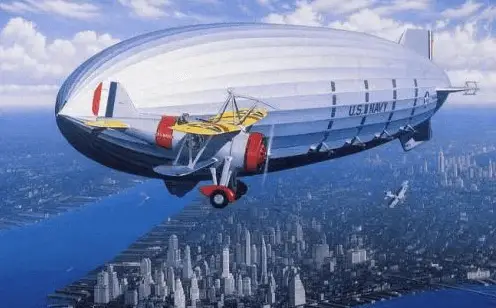
21. Power wing fighters
During World War II, the Germans attempted to develop a powered winged vertical take-off and landing fighter, known as the Triebflugel.
This aircraft was erected on its tail with a rotating ring on the fuselage, and fitted with three thin wings and angled jet engines on the wingtips.
When the engines were activated, the aircraft could take off vertically like a helicopter, but unlike helicopters, it could fly flat at high speed.
However, the Germans soon discovered that this design was impractical, as it was difficult to land with the propeller attached to the engine.

22. Tsar Chariot
The “Tsar Chariot” was alternatively known as the “Bat Chariot” due to its triangular shape resembling bats hanging upside down.
During the initial demonstration of the first prototype in August 1917, in front of the Imperial Court, it was rejected outright because the rear wheels failed to overcome an obstacle.
With poor maneuverability, the Tsar’s Chariot was vulnerable to enemy fire, making it an easy target.
Regrettably, the sole “Tsar Chariot” was relegated to the scrap yard before it could even make its way to the battlefield.
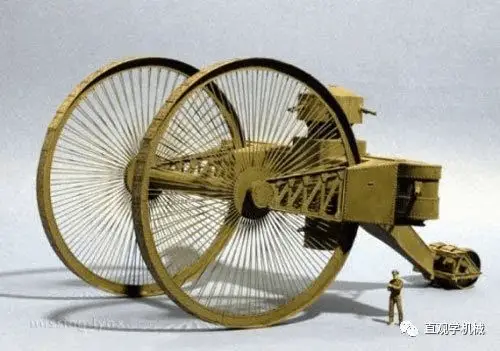
23. Motorcycle artillery
This is the cannon that was used by the French in Vietnam during the 1950s. The combination of a motorcycle and gun was created because the French did not have enough funds to provide more advanced weapons at that time and had to “obtain materials from local sources.”
This vehicle was primarily used by paratroopers. However, it is certain that this type of vehicle offered very poor protection and reloading the artillery was also a problem, which limited its role in the war.

24. Dora Cannon
The Dora Cannon was an over-range gun developed by Germany during World War II. It was a supergiant artillery piece developed in secret after Hitler came to power.
The Dora Cannon had a barrel length of 32.48 meters, a total length of 42.9 meters, a caliber of 800 mm, and a total weight of 1329 tons. It was the largest cannon in the world, and its barrel was large enough for a soldier to squat inside.
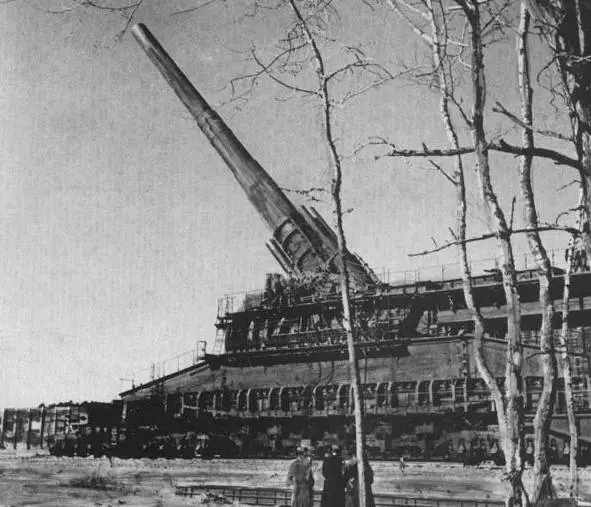
Maintaining the cannon was a challenging task that required the participation of over 4,000 people in command, operation, and guarding. Additionally, the projectile of the cannon was unsatisfactory.
Each penetrator weighed 7.1 tons, and a high explosive projectile weighed 4.8 tons. The propulsion fuel weighed between 1.8 and 2 tons. As a result, only a few dozen projectiles were fired throughout World War II, which was a significant waste of manpower.
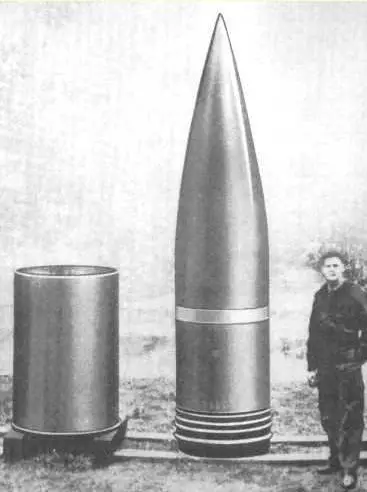
Here’s the problem.
Which manuscript do you think is the best?


